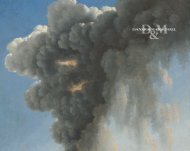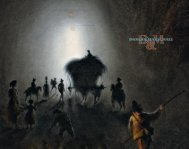Catalogue 2010 - daxer & marschall
Catalogue 2010 - daxer & marschall
Catalogue 2010 - daxer & marschall
You also want an ePaper? Increase the reach of your titles
YUMPU automatically turns print PDFs into web optimized ePapers that Google loves.
PAuL-DéSIRé TROuILLEBERT<br />
‘Les Chaussures’<br />
Paul-Désiré Trouillebert<br />
(1831 - Paris - 1900)<br />
‘Les Chaussures’<br />
Oil on board<br />
Bearing a dedication from the<br />
artist’s widow on the verso<br />
A monsieur Gautiez en souvenir de<br />
mon cher mari / Marie Trouillebert /<br />
6 juillet 1904<br />
25.5 x 36.0 cm<br />
Provenance:<br />
Auction Sale, 19th and 20th-Century<br />
European Paintings, London,<br />
Sotheby’s, 23 February 1983, lot 117<br />
Private collection, London<br />
Literature:<br />
Claude Marumo, Thomas Maier<br />
and Bernd Müllerschön, Paul-Désiré<br />
Trouillebert, <strong>Catalogue</strong> raisonné de<br />
l’oeuvre peint, Stuttgart 2004, no.<br />
0202, repr. p. 276<br />
70<br />
Paul-Désiré Trouillebert ranks as one of the best-known French plein-air painters of the nineteenth century.<br />
His landscapes draw on the English school of plein-air painting. He was also in close contact with the<br />
innovative artists of the Barbizon School. His landscapes have often been attributed to Jean-Baptiste Camille<br />
Corot. On one occasion, a misattribution erupted into a public scandal – known as the Tedesco-Dumas<br />
Affair – the Dumas involved being Alexandre Dumas fils. 1<br />
Trouillebert embarked on a career as a musician at the Théâtre Lyrique in Paris. On the death<br />
of his father in 1855, he put music behind him and devoted his energies to painting. He took up an<br />
apprenticeship with Ernest Hébert (Court Painter to Napoleon III) and later with Charles-François<br />
Jalabert. Trouillebert proved to be an extremely talented and versatile artist. He produced a large body of<br />
landscapes and portraits, orientalist nudes and genre paintings. In the mid-1880s he started to work on<br />
small-format still lifes while continuing to paint landscapes. He exhibited regularly at the Paris Salon and<br />
rejected the Impressionist style and aesthetic. In the 1890s he organized a number of Salons in an effort to<br />
dissociate himself from the Impressionists. He died shortly before the Salon d’été he had arranged at Baron<br />
Haussmann’s.<br />
This freely executed still life represents something of an exception in Trouillebert’s œuvre. The<br />
majority of his still lifes – flower and fruit pieces – were executed after 1885. The subject of the painting<br />
is distinguished by its informal spontaneity. The work was probably painted in the artist’s studio. In the<br />
left background is the verso of a canvas on its stretcher, truncated at the left and the top by the edge of<br />
the painting. Standing upright on the floor directly in front of the canvas is a pair of riding boots. Lying<br />
casually beside them is a pair of black, leather-soled boots, their laces undone as if the wearer had hurriedly<br />
thrown them off in a corner of the studio.<br />
Trouillebert focuses his attention on these supposedly banal everyday objects with the same<br />
painterly precision and mastery with which he handles a landscape subject executed sur le motif. He<br />
concentrates not simply on the objects themselves but on the fleeting effects of light, creating an impression<br />
of spontaneity and immediacy. He captures the ephemeral qualities of atmosphere in a private space. The<br />
intimacy of the artist’s quiet moment of observation is underlined by the personal dedication inscribed by<br />
his widow, Marie Trouillebert, on the verso of the painting. On his death she had discovered a whole group<br />
of small-format still lifes in a locked room. Over time she gave these to friends as gifts.<br />
The accidental effect of this brief segment of observed reality, its immediacy and appearance of<br />
spontaneity reflect the growing awareness of photography by late nineteenth-century artists. They illustrate<br />
the changes that photography brought about in ways of seeing and constructing images and underline<br />
the interrelationship of photography and art. In the compositions of Cézanne and Manet the accidental<br />
element seems constructed. Degas, who was fascinated by photography, exploited these accidental effects<br />
as a conscious stylistic device.<br />
1. Alexandre Dumas fils had purchased a painting in the belief that it was a Corot (it bore a forged signature), however the painting was<br />
in fact by Trouillebert. The court case was a turbulent affair but it brought Trouillebert considerable fame.






